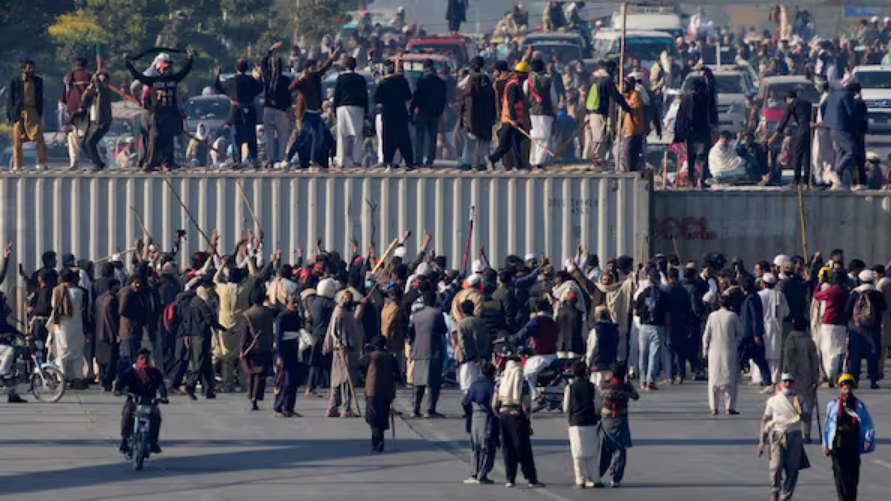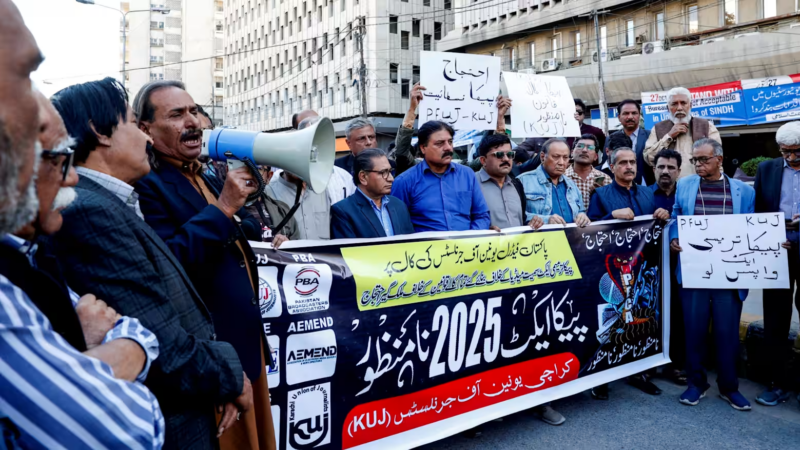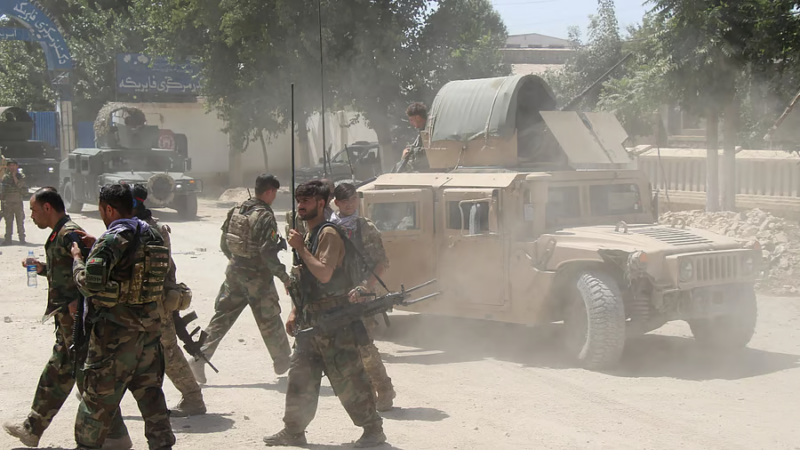Pakistan’s urban centres are tinderboxes waiting for the next inferno

Urban Pakistan today stands perilously on the edge of disaster, not because of foreign wars or natural calamities, but due to the nation’s own negligence.
From Karachi to Lahore, the country’s bustling urban hubs are fast transforming into sprawling fire hazards, where inadequate safety infrastructure, poor awareness, and criminally negligent response systems create a tinderbox scenario.
Tragedy after tragedy demonstrates that fires in Pakistan are neither isolated nor accidental—they are predictable outcomes of systemic failure.
The most recent episode unfolded at a factory in Karachi’s Landhi Export Processing Zone, where a blaze left at least eight workers injured.
Reports from rescue officials revealed a grim truth: these injuries could have been avoided.
Workers had allegedly been ordered by management to salvage goods from the burning building, effectively sacrificing human lives for corporate property.
The fire could not be contained swiftly because firefighters lacked a proper water supply, forcing departments from across the city to scramble together a delayed response.
The incident was narrowly spared from turning into another deadly catastrophe, but the pattern is chillingly familiar.
Recurring fires, repeated negligence
Urban Pakistan has a long and bloody history of fire-related disasters, each laying bare the same story of neglect.
Only weeks before the Landhi blaze, Lahore’s Hafeez Centre—one of the largest commercial hubs in Punjab—was engulfed in flames, causing extensive financial loss and paralysing businesses.
But the country’s most haunting fire remains the 2012 Baldia Town factory inferno in Karachi, where over 250 workers perished in one of the worst industrial disasters in Pakistan’s history.
Although deliberate arson was blamed, the scale of the tragedy was amplified by blocked exits, locked doors, and absent emergency plans. Those responsible for safety failed to protect the very people whose labour sustained the factory.
These are not aberrations. They are the norm. Karachi’s fire department alone reportedly received close to 3,000 distress calls last year.
Alarmingly, experts estimate that nearly 70% of Karachi’s buildings lack basic fire safety mechanisms—a staggering figure that reveals how deeply entrenched the negligence runs.
In other words, millions of lives are at daily risk, living and working in structures that could instantly transform into death traps.
Factories and high-rises as death traps
Pakistan’s industrial and commercial sectors, instead of prioritising worker safety, often place profit above human life. Factories operate with poor compliance with labour safety standards.
Emergency exits are rare, fire drills are virtually unheard of, and protective equipment for workers is almost nonexistent.
In many workplaces, extinguishers are missing, alarms are dysfunctional, and water hydrants are dry.
The Hafeez Centre fire exposed how major commercial complexes, supposedly hubs of economic prosperity, can instantly collapse into charred ruins because authorities neither inspect them rigorously nor enforce fire codes.
The rapid expansion of urban high-rises compounds the danger. New buildings rise overnight, often through corrupt approvals that overlook or bypass safety requirements.
Apartments, shopping plazas, and offices are stacked in congested neighbourhoods with no fire escape routes. Narrow streets prevent fire engines from entering.
Even when firefighters arrive, they are hamstrung by a lack of water supply, outdated tenders, and insufficient training. The result is chaos—fires that could be contained in minutes spiral for hours, consuming lives and livelihoods.
Culture of complacency
The root cause of Pakistan’s fire hazard crisis lies not only in poor infrastructure but also in a culture of complacency.
Fire safety is treated as an afterthought, if at all. For most urban residents, fire drills are alien concepts.
Schoolchildren are rarely taught the basics of fire safety, factory workers are left unaware of evacuation protocols, and shop owners store hazardous materials without precaution.
Managements routinely prioritise salvaging goods over saving lives, as seen in the Landhi incident.
Government departments, too, exhibit the same neglect. Fire departments remain underfunded and understaffed. The lack of coordination between agencies leads to confusion whenever a disaster strikes.
It is common to see multiple departments summoned to a fire only to discover that none are adequately equipped to handle it. Bureaucratic red tape further slows down emergency responses, costing precious minutes and lives.
This attitude extends to policymakers, who have allowed decades to pass without seriously reforming fire safety laws.
Even when horrific incidents like Baldia Town spark outrage, it quickly dissipates without structural change.
Regulations remain weak, enforcement weaker, and accountability almost nonexistent. Building owners who violate codes are rarely penalised, while victims’ families are left to mourn in silence.
The human cost of neglect
Behind the statistics lies a human toll that is routinely ignored.
Every fire disaster leaves families shattered, workers displaced, and communities traumatised.
Survivors often live with permanent injuries and psychological scars, while victims’ families face economic ruin.
The 250 families who lost loved ones in Baldia Town remain a grim reminder of how little value is placed on life in Pakistan’s industrial and urban planning systems.
The repeated injuries and deaths are not accidents—they are consequences of deliberate disregard.
Forcing workers to enter burning buildings to save merchandise, locking factory exits, or failing to maintain extinguishers are not mistakes. They are acts of negligence that reflect a system that commodifies labour while devaluing human beings.
Cities built for flames
What makes Pakistan’s situation particularly dire is that its urban growth model is essentially constructing cities built for flames.
Overcrowded residential areas are interspersed with small workshops storing flammable materials.
Electricity theft and faulty wiring are rampant, with exposed wires dangling above congested streets.
Gas leaks, cylinder explosions, and haphazard storage of chemicals make neighbourhoods highly combustible. Yet, fire safety audits are almost unheard of.
Karachi, a city of over 20 million, serves as a glaring example. Its chaotic sprawl combines dense population, hazardous infrastructure, and dysfunctional governance—a lethal formula.
While experts warn of looming disaster, the city continues to expand vertically and horizontally without any serious integration of fire safety into its planning.
Lahore, Faisalabad, and other urban centres mirror the same trajectory, creating an urban fabric where one spark can set off a catastrophe.
A nation engulfed in its own negligence
The string of recent fires across Pakistan, from Landhi to Hafeez Centre, underscores a truth too uncomfortable to ignore: urban Pakistan is living in the shadow of preventable infernos.
Each blaze exposes the absence of preparedness, the negligence of management, and the incompetence of institutions entrusted with protecting lives.
That over two-thirds of Karachi’s buildings lack proper fire safety is not just a statistic; it is an indictment of a system that has normalised hazard.
Pakistan’s cities are not merely vulnerable—they are engineered for disaster by neglect, corruption, and indifference. The danger does not lie in whether the next tragedy will occur, but when. And when it does, as history repeatedly shows, it will not be the powerful who pay the price, but the ordinary workers, residents, and families trapped in buildings designed to fail them.






